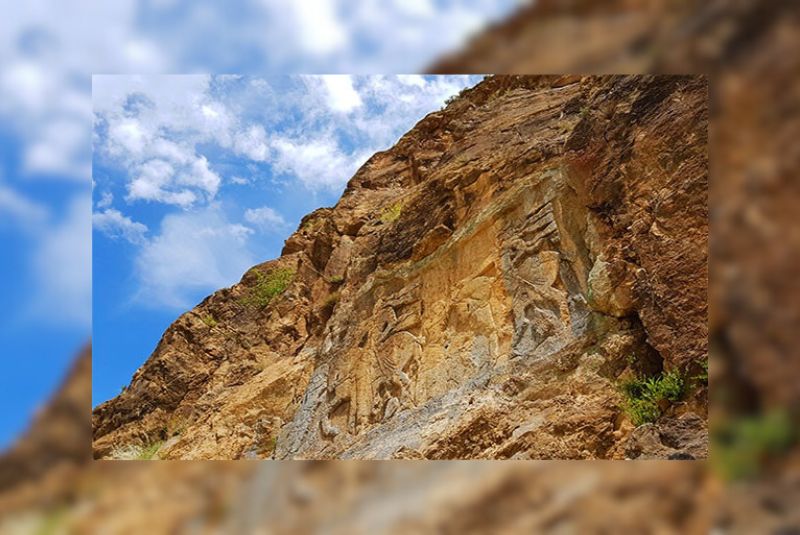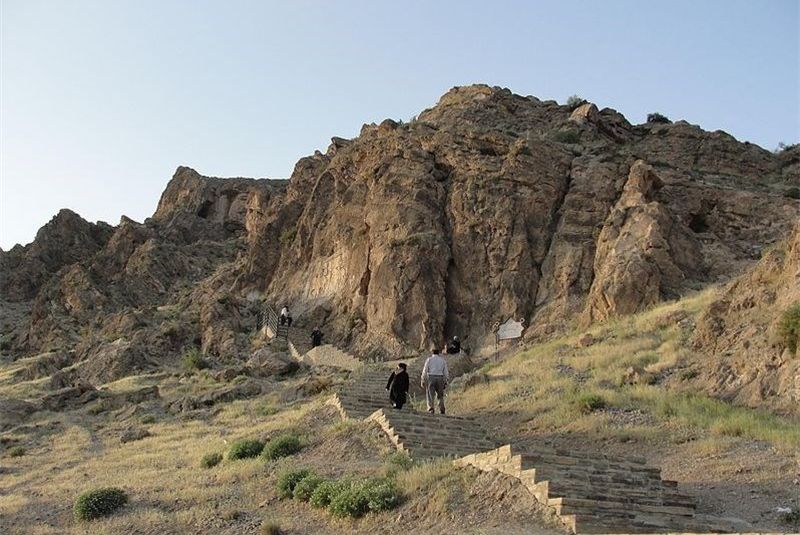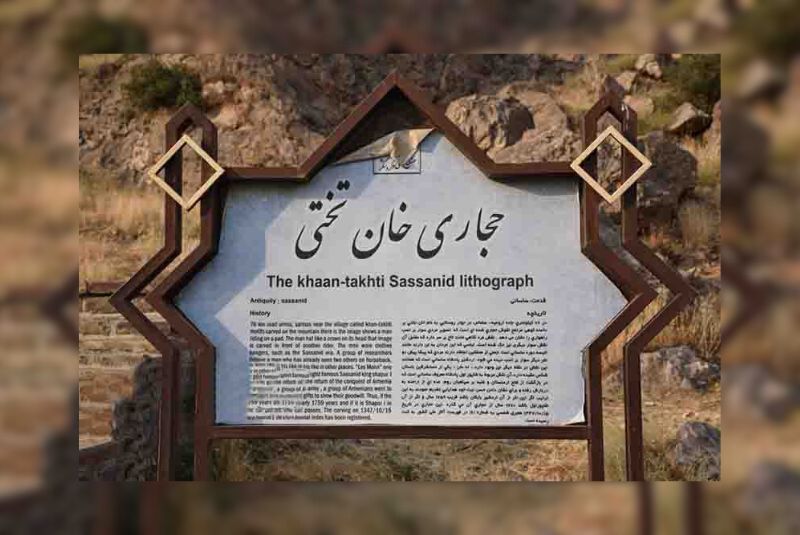Khan Takhty Rock Relief: A Sassanian Masterpiece Near Urmia
Located near the village of Khan Takhti and close to the city of Salmas, the Khan Takhty Rock Relief is carved into the solid face of Kouh Pir Chavoush mountain.
This ancient inscription highlights the historical significance and cultural identity of the region. Dating back to the Sassanid era, it illustrates important events and conquests by the Iranians of that time.
The city of Salmas, situated in West Azarbaijan province, boasts a rich historical heritage. Known as Shahpur during the Pahlavi era, Salmas is a small city set in a fertile plain. Historical records describe Salmas as a thriving market town with a distinctive stone mosque.
The History of Khan Takhty Rock Relief

In the Parthian period, the area around present-day Salmas served as a buffer zone between Iran and the Roman Empire. Excavations in Salmas link the city to the Medes era. During the Achaemenid period, it was known as Zarvand. After the fall of the Parthian king Khosrow, the Sassanids took control of Salmas due to its strategic position between Iran and Rome.Later, it became a battleground for military conflicts between the Sassanid Empire and Rome.
Emperor Julian of Rome once attacked and captured Salmas. However, in a pivotal battle, Ardeshir Babakan and Shapur I of the Sassanids defeated the Roman forces and secured victory in Armenia. The significant stone carving of Khan Takhty commemorates this triumph.
The Khan Takhty inscription, located near Salmas, is approximately 18 centuries old, dating back to the Sassanid period and the 3rd century AD. Numerous archaeologists, including Carpenter, Flanders, Kost, Demergan, Lehmann, and Walter Hintz, have studied and introduced these petroglyphs.
This rock relief commemorates one of the Iranian victories over the Romans, depicting Ardeshir Babakan and his heir, Shapur I. Upon their return from conquering Armenia and defeating the Roman troops, they are shown being presented with gifts by two local Armenian rulers.
The relief also portrays Roman Emperor Valerian kneeling before Shapur of the Sassanids and the local Armenian ruler offering gifts to Ardeshir and Shapur, highlighting the Sassanid victory over Rome and their conquest of Armenia.
Architecture of Khan Takhty Rock Relief

The Khan Takhty inscription measures approximately 2 meters in width and 2.5 to 3.5 meters in length. Positioned 2 meters above ground level, these intricate carvings captivate viewers with their beauty and detail. The relief features men on foot and horseback, adorned with crowns that reflect the fashion of the Sassanid era under Ardeshir's reign. The figures depicted are believed to be Ardeshir Babakan, the founder of the Sassanid dynasty, and his son and crown prince, Shapur I. Both were formidable rulers known for their victories over the Romans.
The composition of the relief, from left to right, shows an Armenian noble presenting gifts to Ardeshir Babakan, Ardeshir on horseback, another Armenian noble presenting gifts to Shapur I, and Shapur also on horseback. The horses are depicted in half-length, while the heads of the figures are three-quarter-length, their torsos full-length, and their legs half-length. This detailed and balanced portrayal showcases the kings' faces, the harmonious composition, and the majestic proportions of the horses, all of which highlight the Sassanian sculpting mastery.
Stairs have been added to facilitate access to the Khan Takhty Rock Relief, making it easier for visitors to appreciate this historical artwork. The primary purpose of this relief was to document historical events, celebrate the kingdom's glory, and exalt the king's power and status.
Khan Takhty Rock Relief Location and Access

The Khan Takhty Rock Relief, dating back to the Sassanian period, is located 15 kilometers along the Salmas-Urmia road, near the village of Khan Takhti on Pir Chavosh mountain.
To reach Salmas, one option is to travel to Urmia and then drive about 90 kilometers north to Salmas. If traveling by private car, the historical site is easily visible from the Urmia-Salmas road.
Visiting the Khan Takhty inscription takes about half an hour, and there is no entrance fee. The site remains tranquil except during Persian Nowrouz celebrations when it becomes crowded with tourists. Due to the area's mountainous nature, it's advisable to avoid visiting during winter.
The site is accessible without the need for climbing equipment, as steps have been carved into the mountainside. While visiting, it’s important to respect the site by not writing souvenirs or littering. Additionally, while in West Azarbaijan province, visitors can explore the attractions in Urmia city.

Final Takeaway
The Khan Takhty Rock Relief is a historically significant site that beautifully captures the essence of the Sassanian era. This must-see attraction is a testament to Iran's rich cultural heritage. When traveling through Iran and visiting Urmia, make sure to explore this remarkable historical monument.
Share your story!
Comment below and let us know about your Experience.
Your story inspires others!


Comment
Leave a Comment